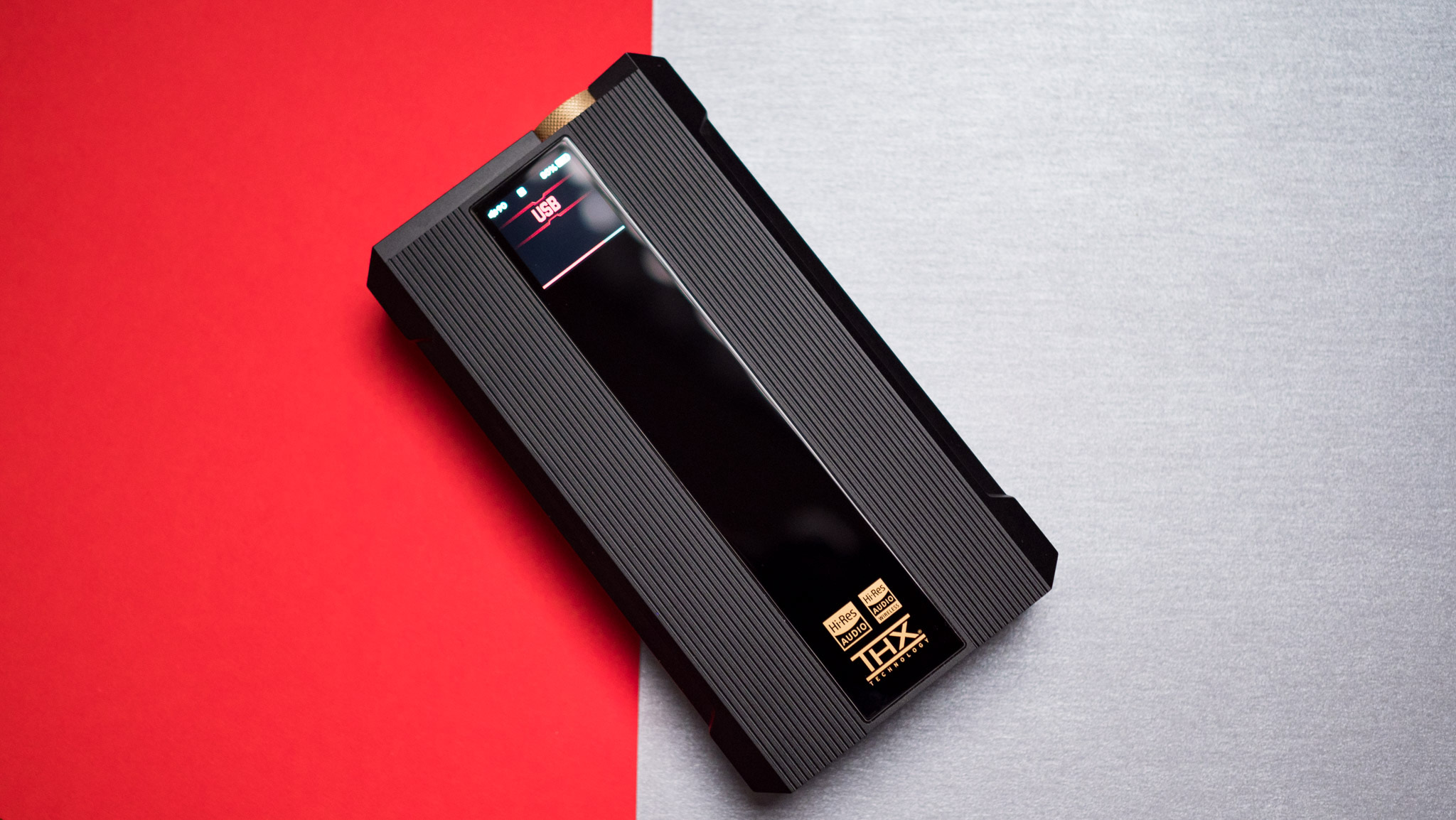
Fiio did a great job filling out its portfolio of late, and one of the best additions is the Q7. The DAC is aimed at the high-end segment, and has an interesting origin story. It essentially features the guts of the M17 digital audio player — which retails for $1,800 — but without the player portion. So the Q7 doesn't have a screen and it misses out on all the bits needed for an audio player: there's no Android interface for starters, and it isn't powered by the Snapdragon 660.
What you get instead is the same audio circuitry as the M17, and that makes the Q7 very enticing. Going this route not only makes the Q7 that much more versatile, but it also brings the price down by a significant amount: $749, or just 42% of the cost of the M17. You're still getting the same incredible DAC and amp modules — it features ESS Sabre's ES9038Pro DAC and the stellar THX AAA 788 amp — all in a portable form factor that's usable with a phone or in a desktop setting.
The Fiio Q7 launched in November 2022, and you can your hands on it at Amazon for $749. I used the DAC for the better part of four months, and having used most of Fiio's recent launches, I can honestly say that this is one of the brand's best efforts. The versatility combined with the design and the hardware on offer here makes the Q7 a phenomenal DAC, and it may just be the all-in-one endgame DAC you're looking for.
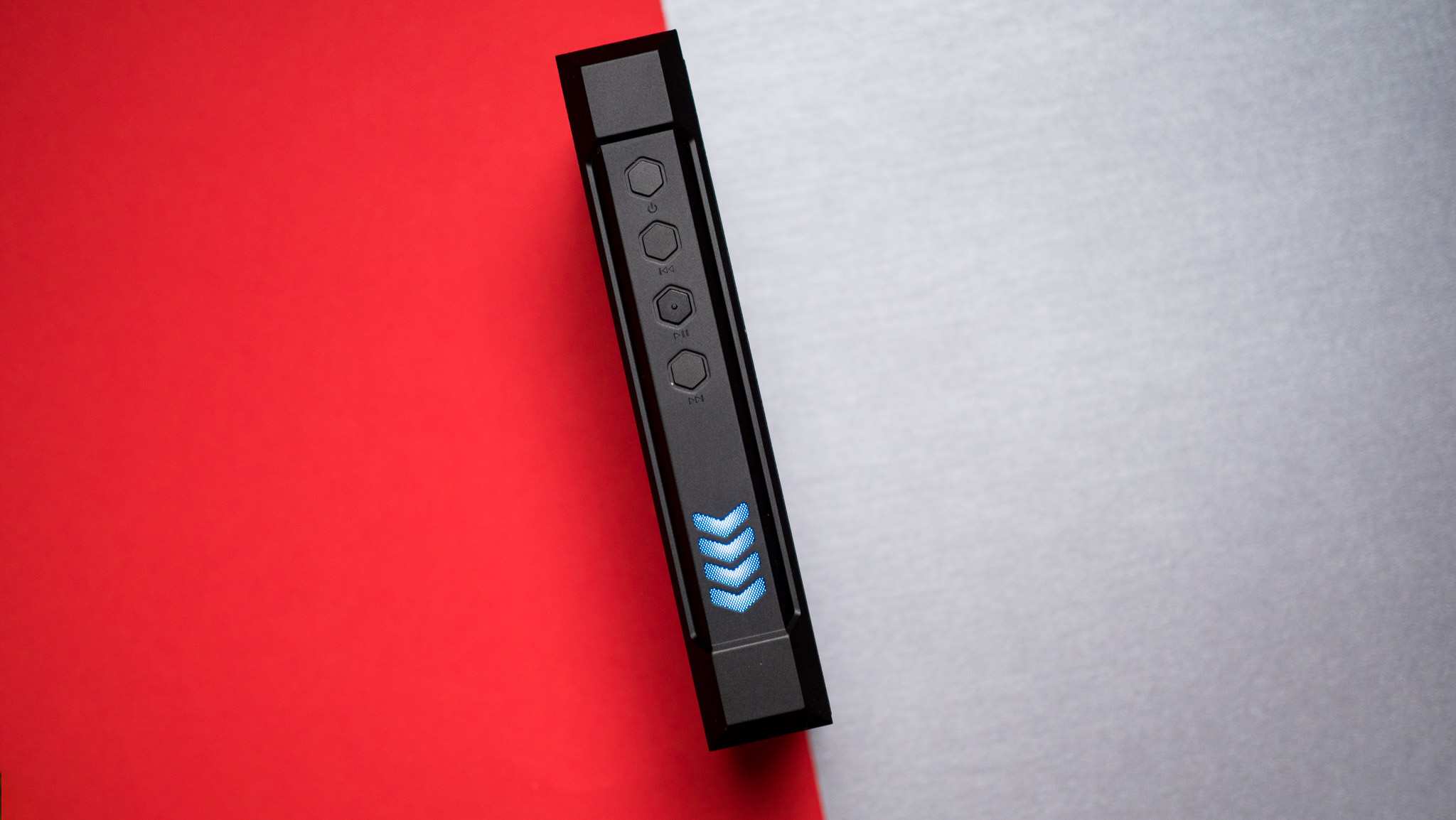
Let's start with the design. The Q7 shares Fiio's new design aesthetic, and that means you'll find aggressive styling with jagged sides and RGB lighting along the vents on the sides. With dimensions of 158.4 x 88.5 x 28.3mm and a weight of 620g, the Q7 is an absolute unit, and while it is designed for portable use, it is too big and heavy to just throw around in a bag, and you'll be better served by the likes of the BTR7 instead.
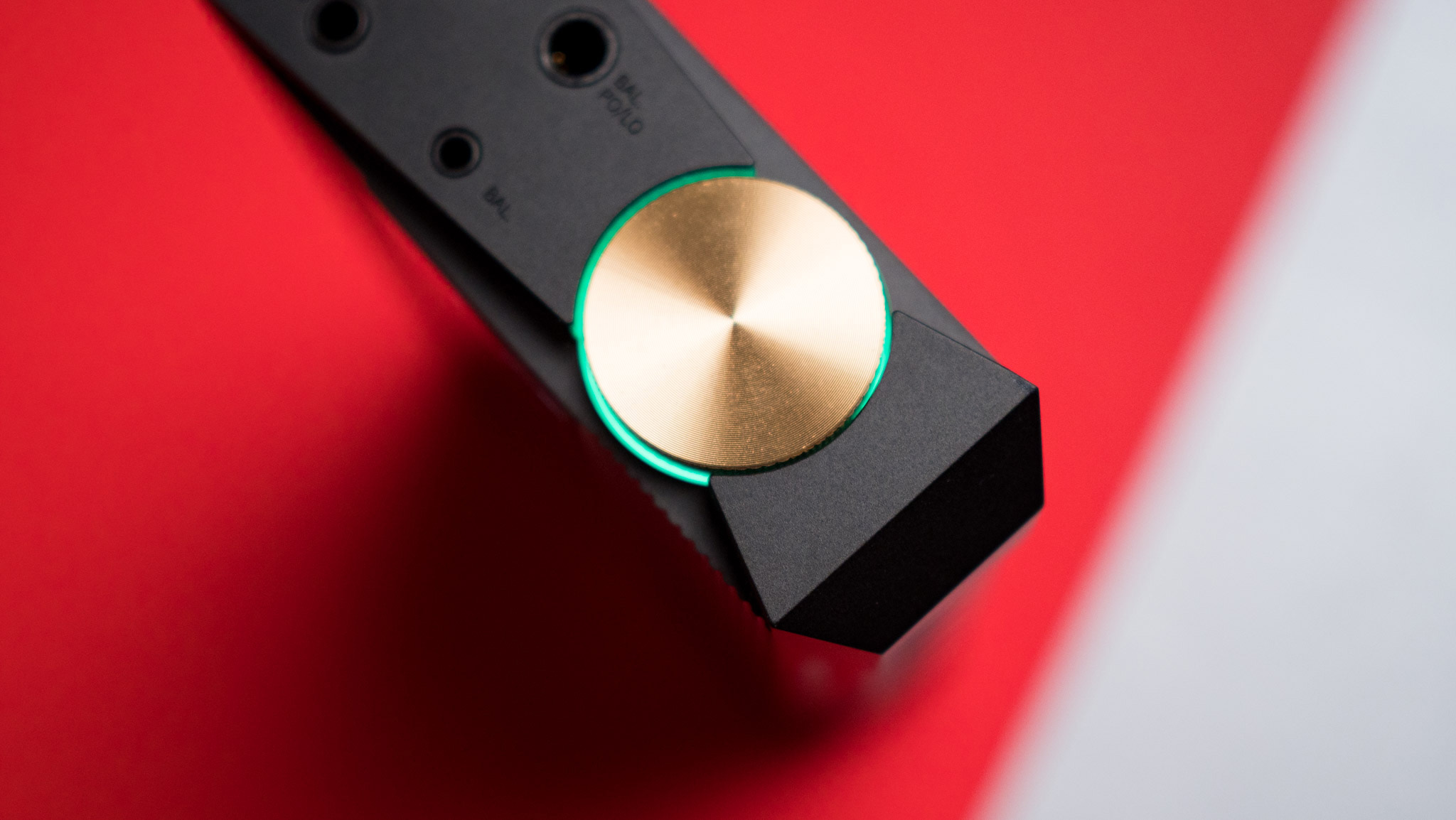
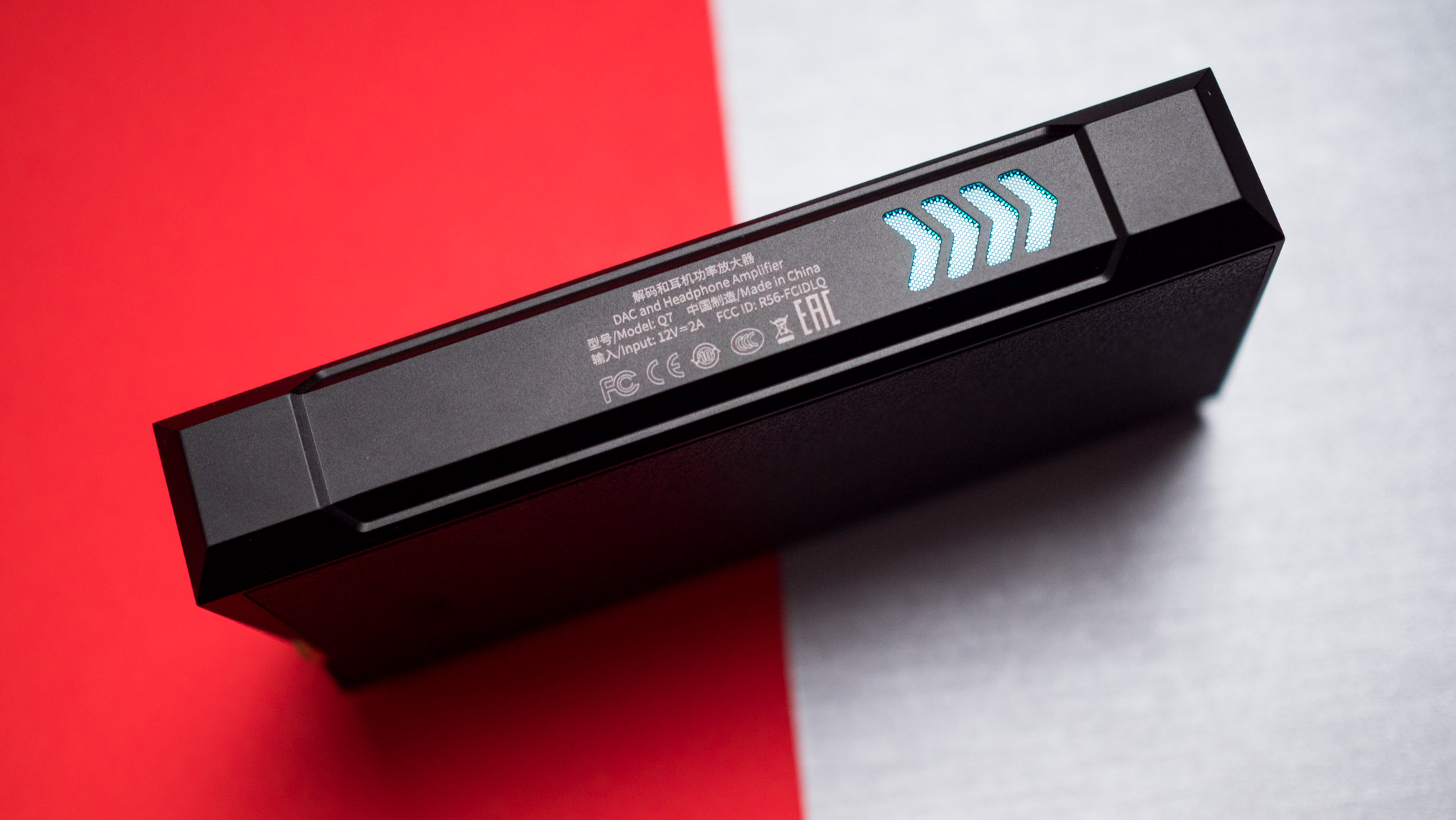
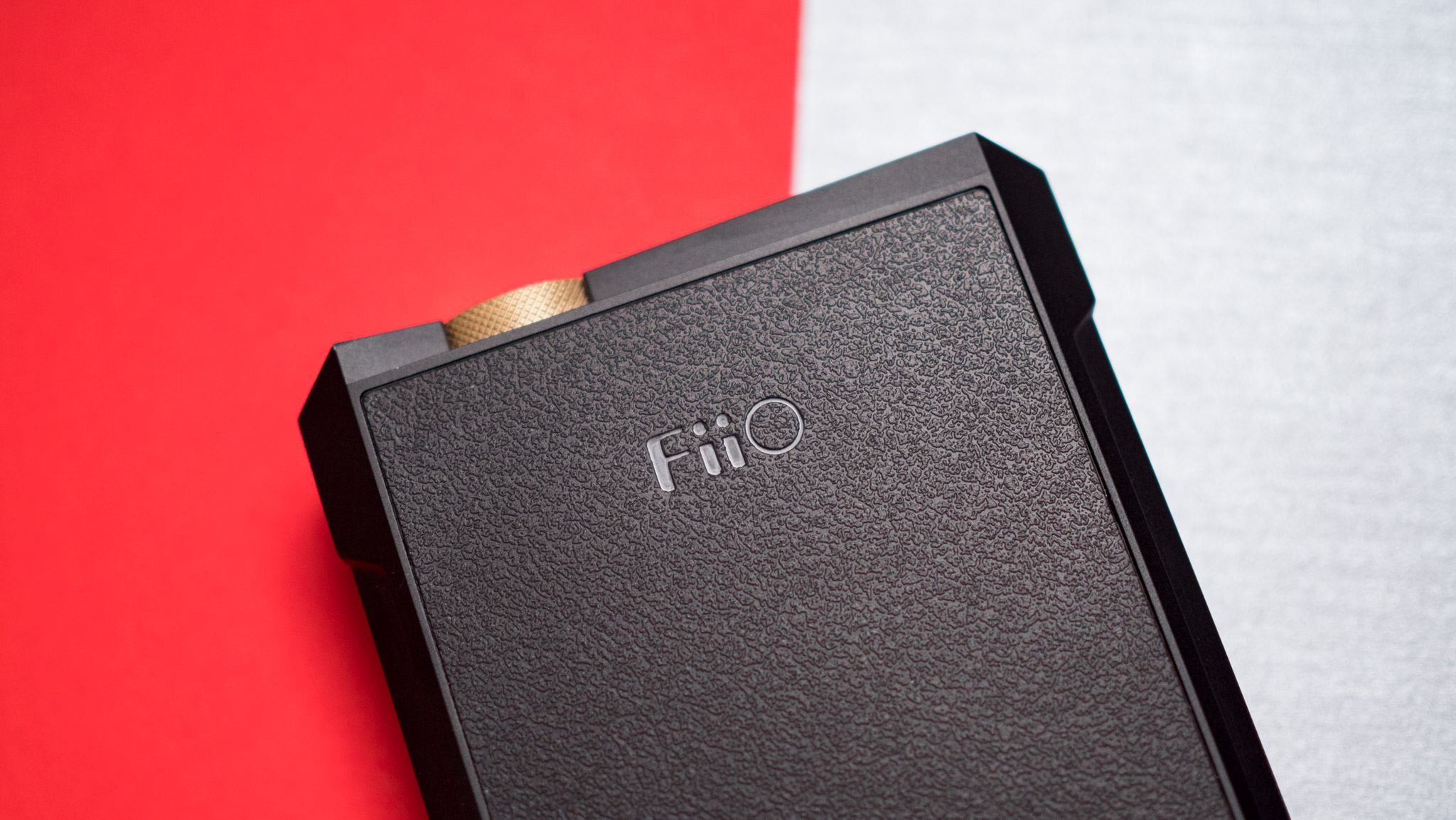
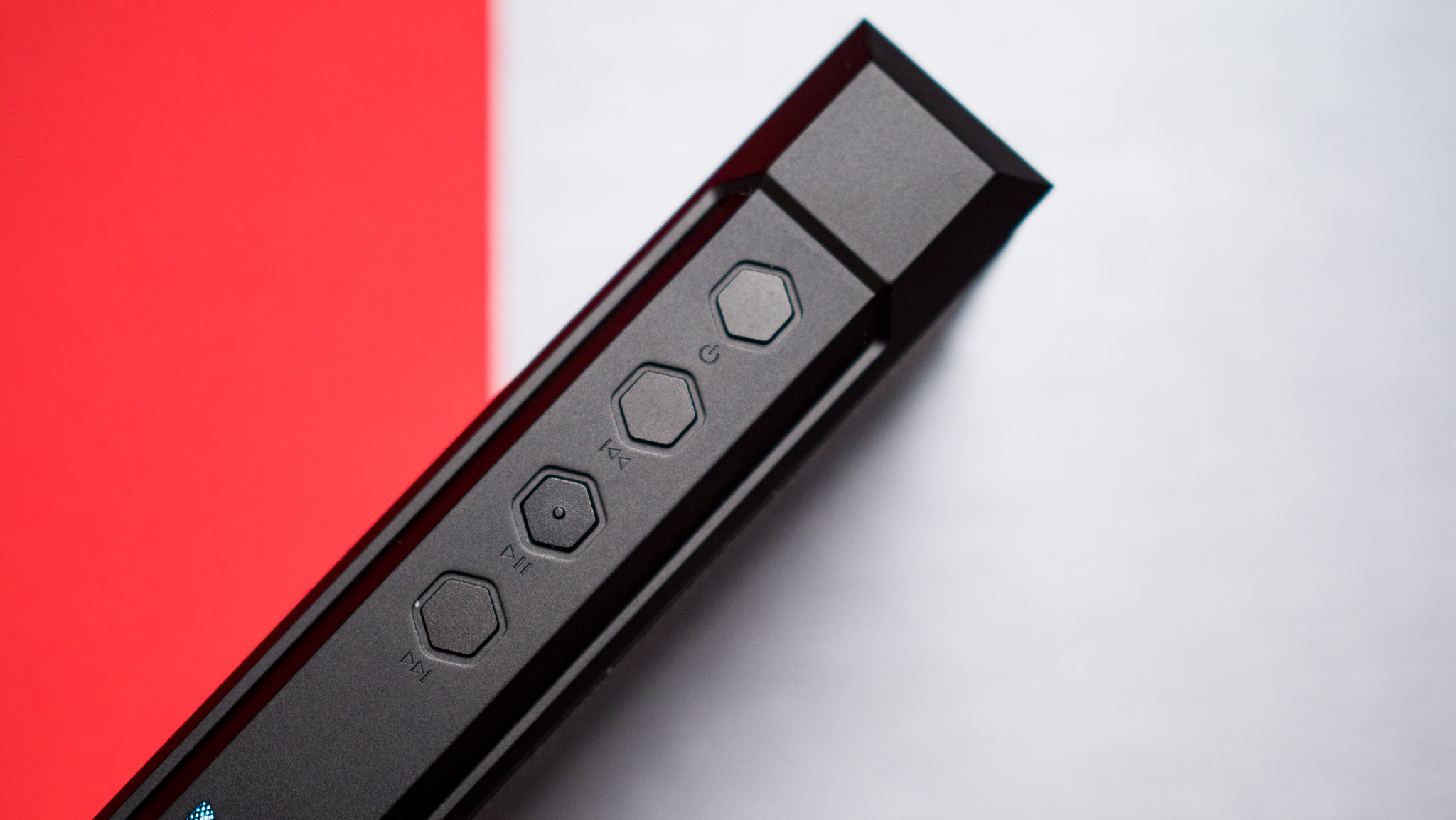
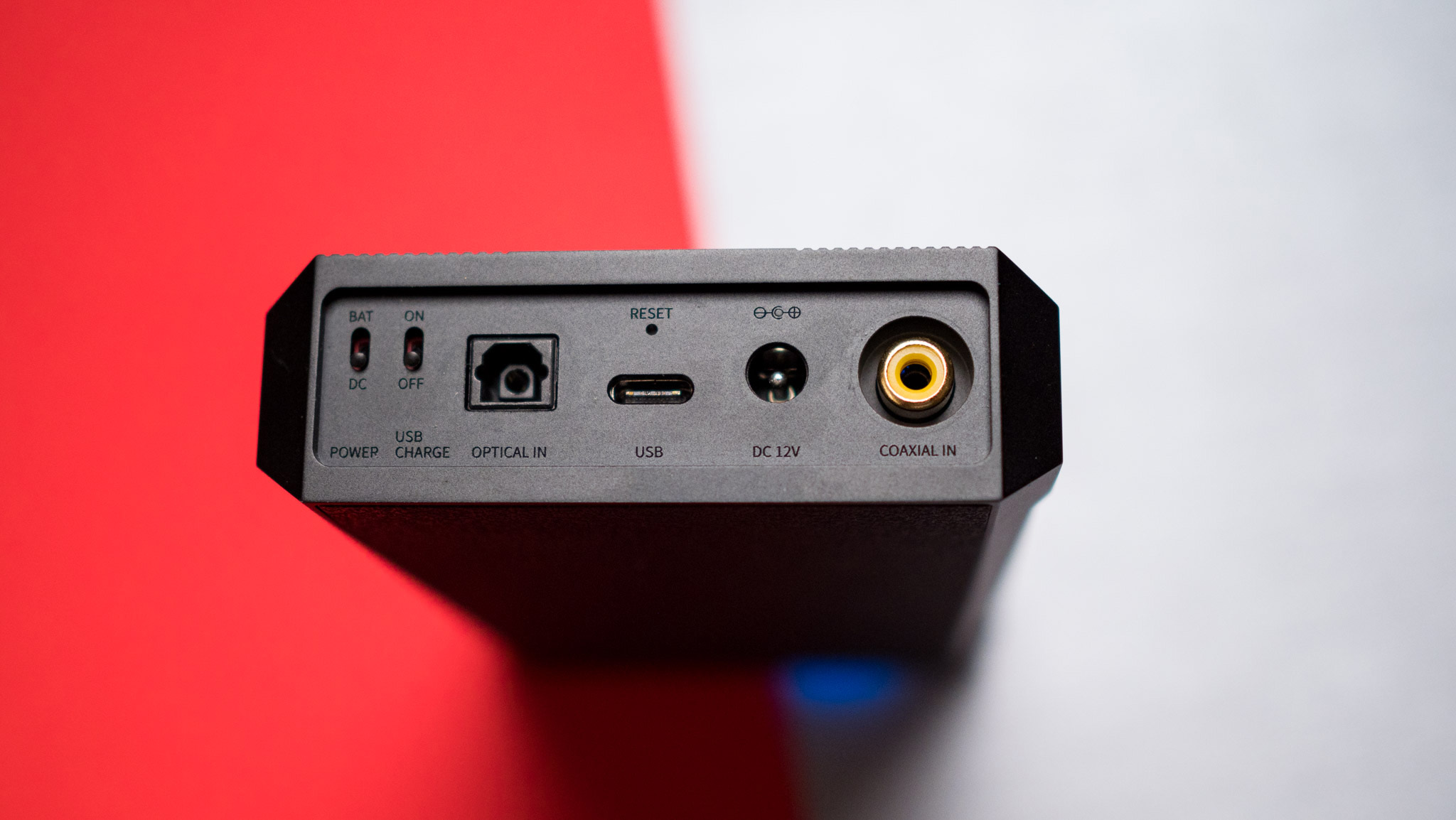
The Q7 is made out of aluminum, and even from a first glance, it's easy to see that this is a high-end product. The machined aluminum chassis combined with the gold accents give the DAC a lot of character, and the glass panel that runs along the length of the Q7 at the front provides a nice contrast to the design and makes the DAC look that much more elegant.
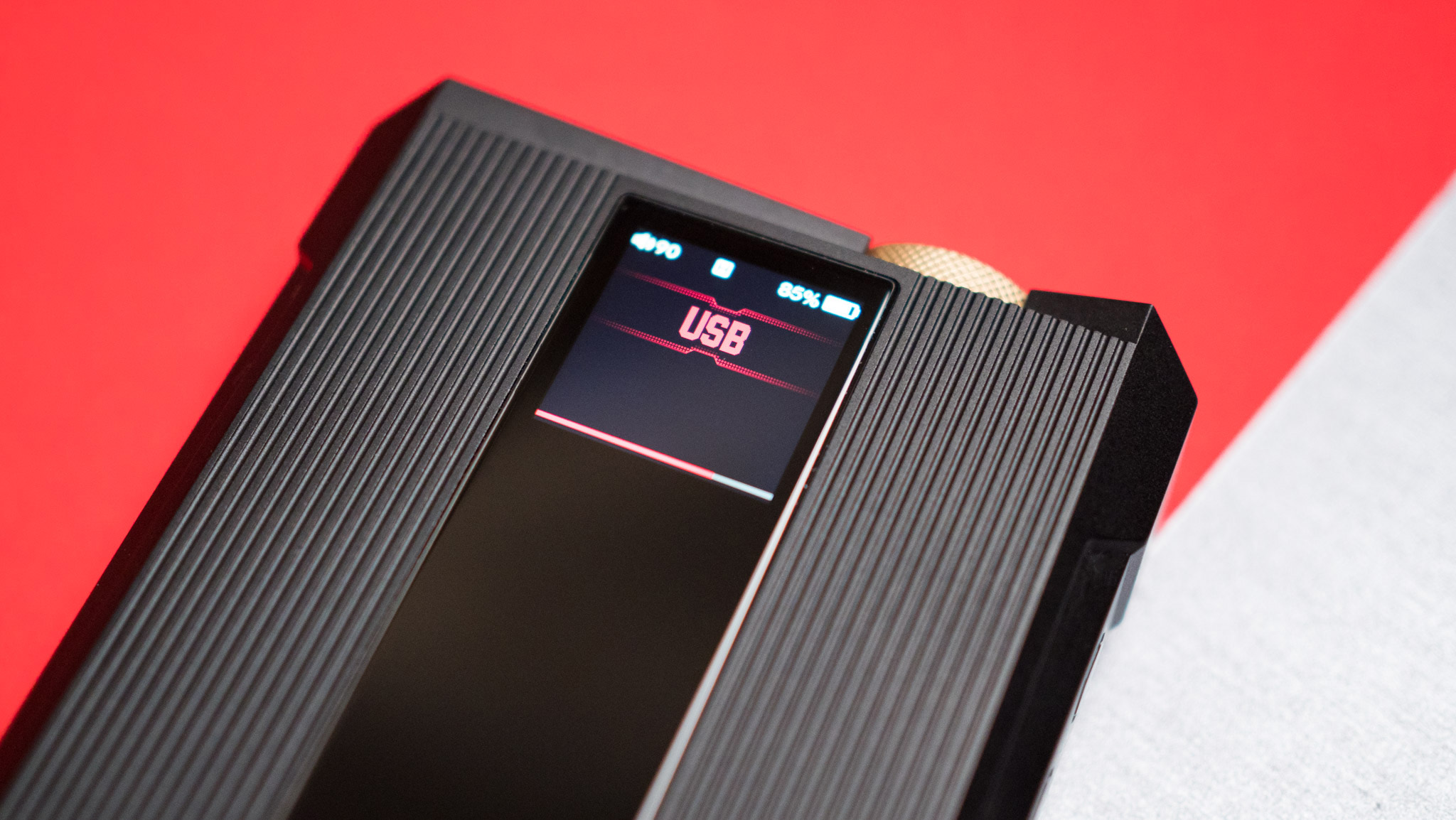
The screen is located at the front, and the 1.3-inch TFT panel has a resolution of 240 x 240, which is more than adequate for the intended use case. You'll find THX and Hi-Res Audio labels at the bottom, and the back of the Q7 has a textured finish that feels great to hold. The right side of the Q7 has the buttons for power and music playback, and adding to the bold styling of the DAC, these are hexagonal.
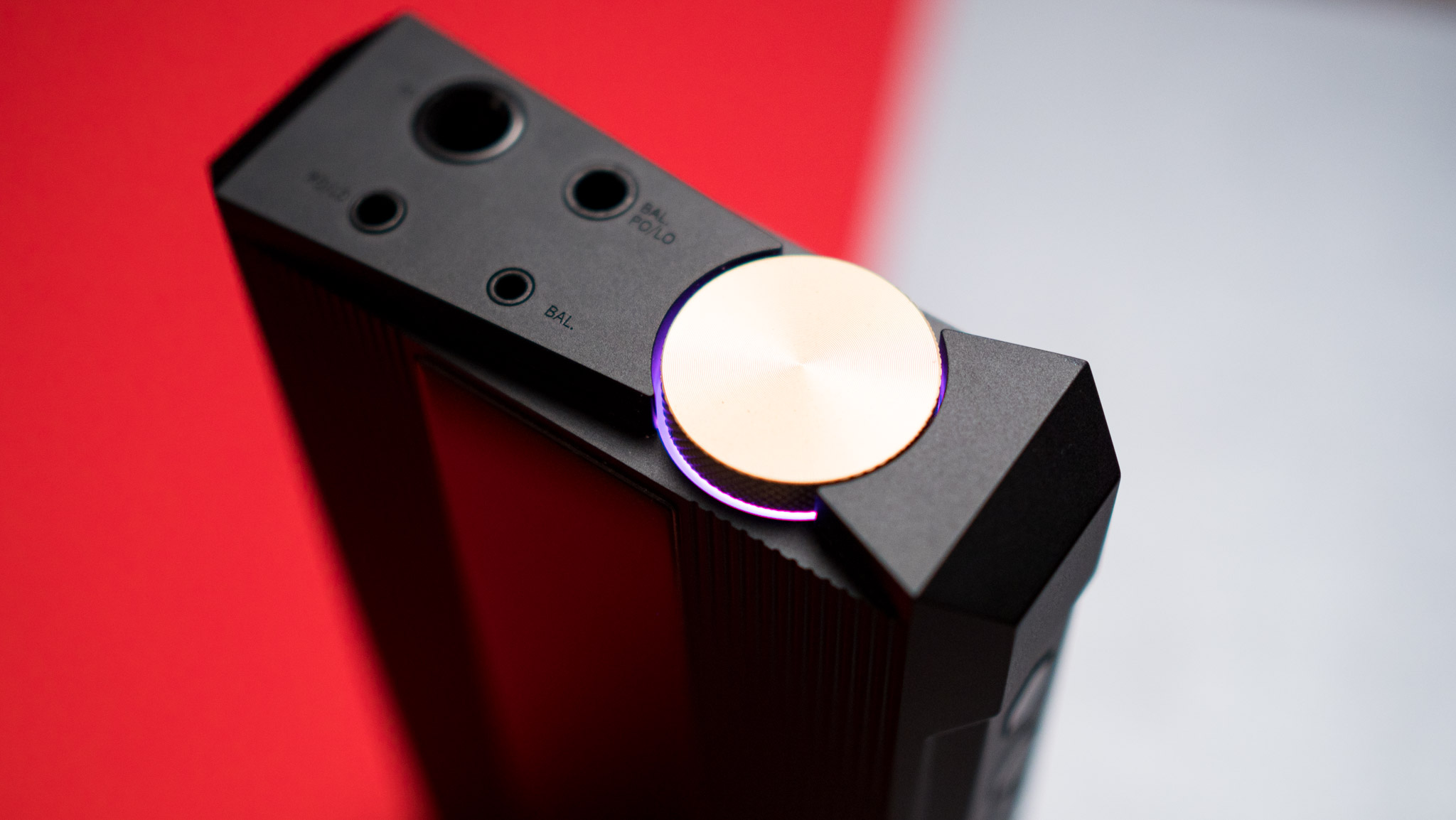
The volume knob is at the top, and it is decked out in gold. It features an RGB LED ring on the underside that changes color based on the source being used: blue for music playback up to 44.1KHz/48KHz, yellow for 88.2/96/176/352.8/384/705.6/768KHz, green for DSD64/128/256/512, and magenta for MQA playback. Like the K9 Pro, this is a nice visual indicator that tells you the quality of files being played.
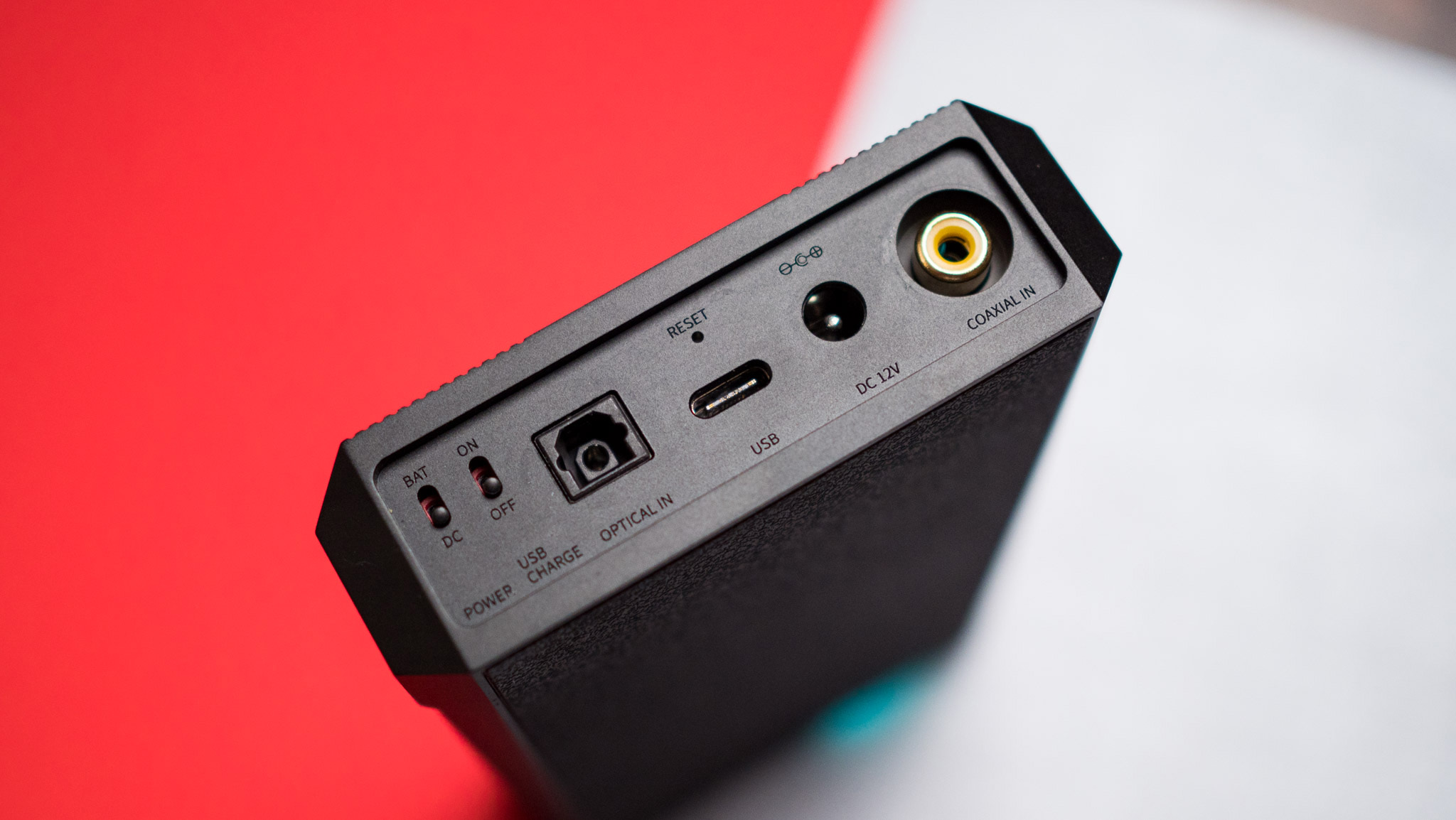
The bottom of the Q7 houses all the input options, and you get optical and coaxial inputs along with USB-C, and a DC port. All the ports have covers to ensure dust doesn't get in, and you'll find the power toggle at the bottom. There's also a nifty toggle that lets you switch between DC power and battery: the Q7 has a massive 9,200mAh built-in battery, but it can be powered by the DC port. If you use the latter, you can bypass the battery altogether, and this makes the most amount of sense if you intend to use the Q7 in a desktop setting.
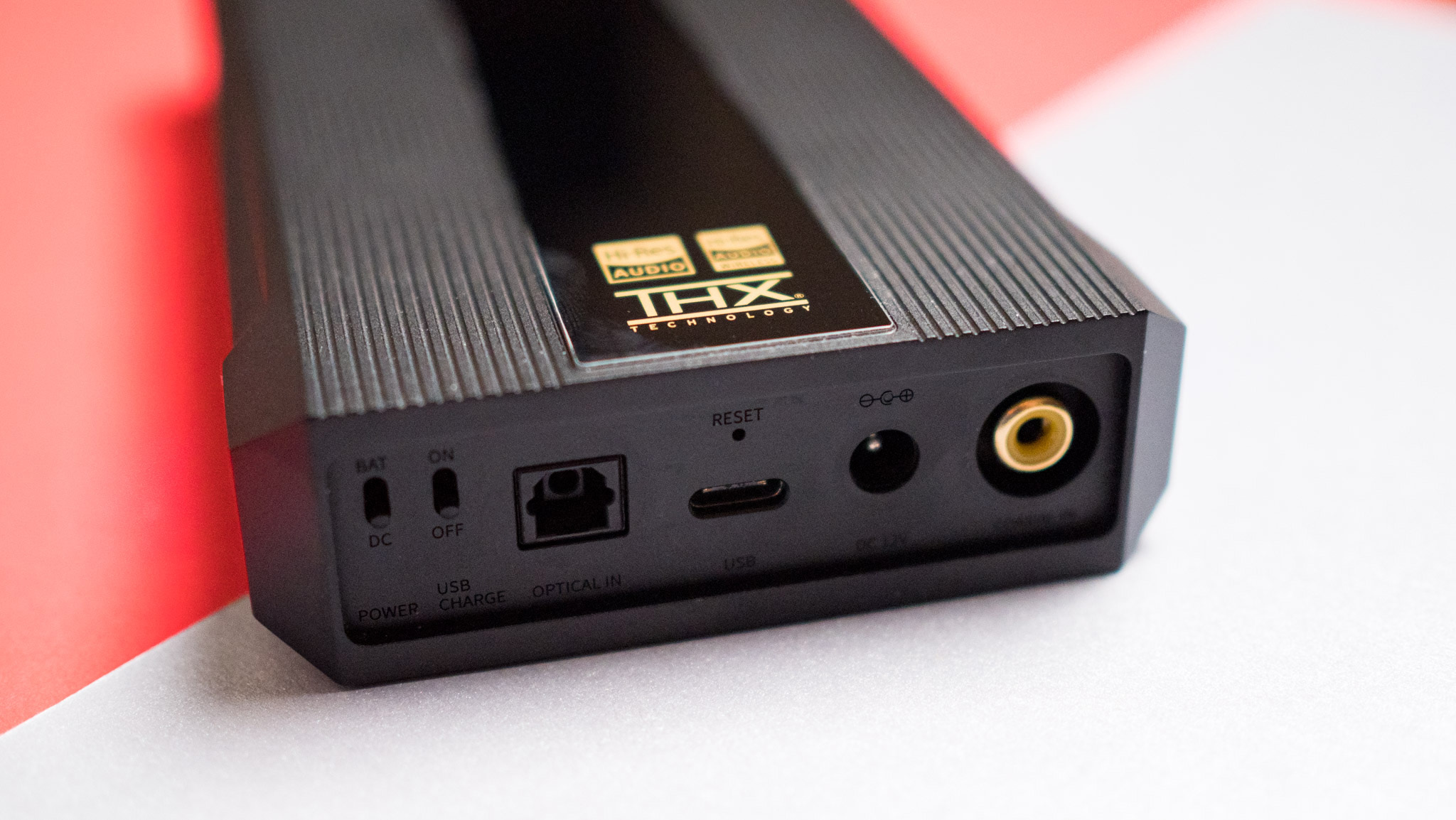
If you're eyeing the Q7 for portable use, know that the battery lasts just over ten hours on a full charge, and charging the unit takes an agonizing 4.5 hours. There is no fast charging here, and I only saw the charge go up to 10W when connected to a USB PD 3.0 outlet on the Nexode 200W.
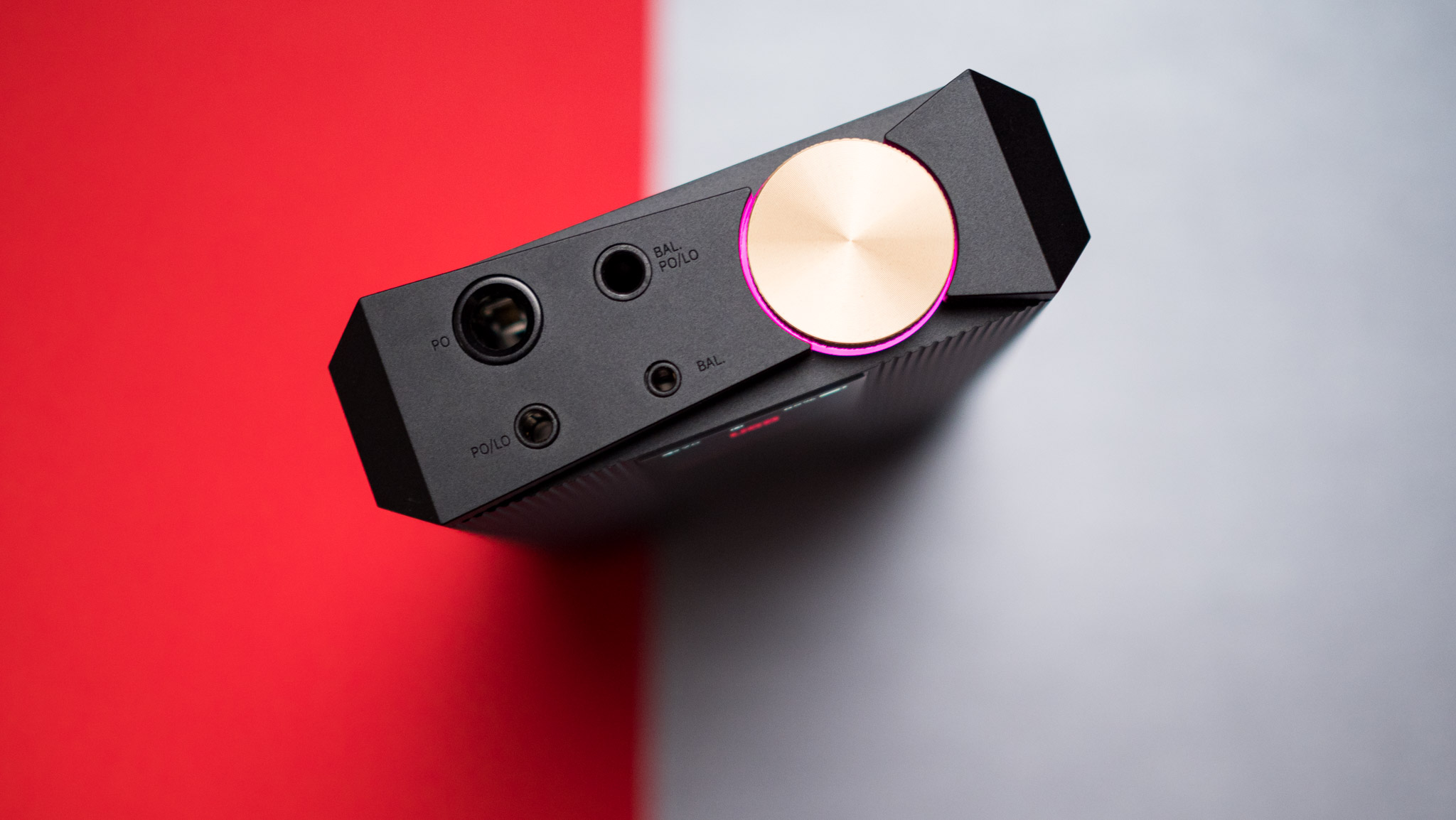
You'll find all the outputs up top, and you get a single-ended 3.5mm jack, balanced 2.5mm and 4.4mm ports, and even a full-fledged 6.35mm connector. The 6.35mm port gets a dust cover, and it's great to see Fiio bundle the full-size port on this device. The 3.5mm and 2.5mm ports work as line out as well.
The screen gets bright enough and has a full-color panel, and is ideal for viewing source information and accessing the menus. You can navigate the menus with the volume knob — which doubles as a multi-function button — and you'll be able to select the language and switch between the four modes: USB, Coaxial, Optical, and Bluetooth. On that note, the Q7 has an extensive selection of Bluetooth codecs, including AAC, SBC, AptX, AptX LL, AptX adaptive, AptX HD, and LDAC.
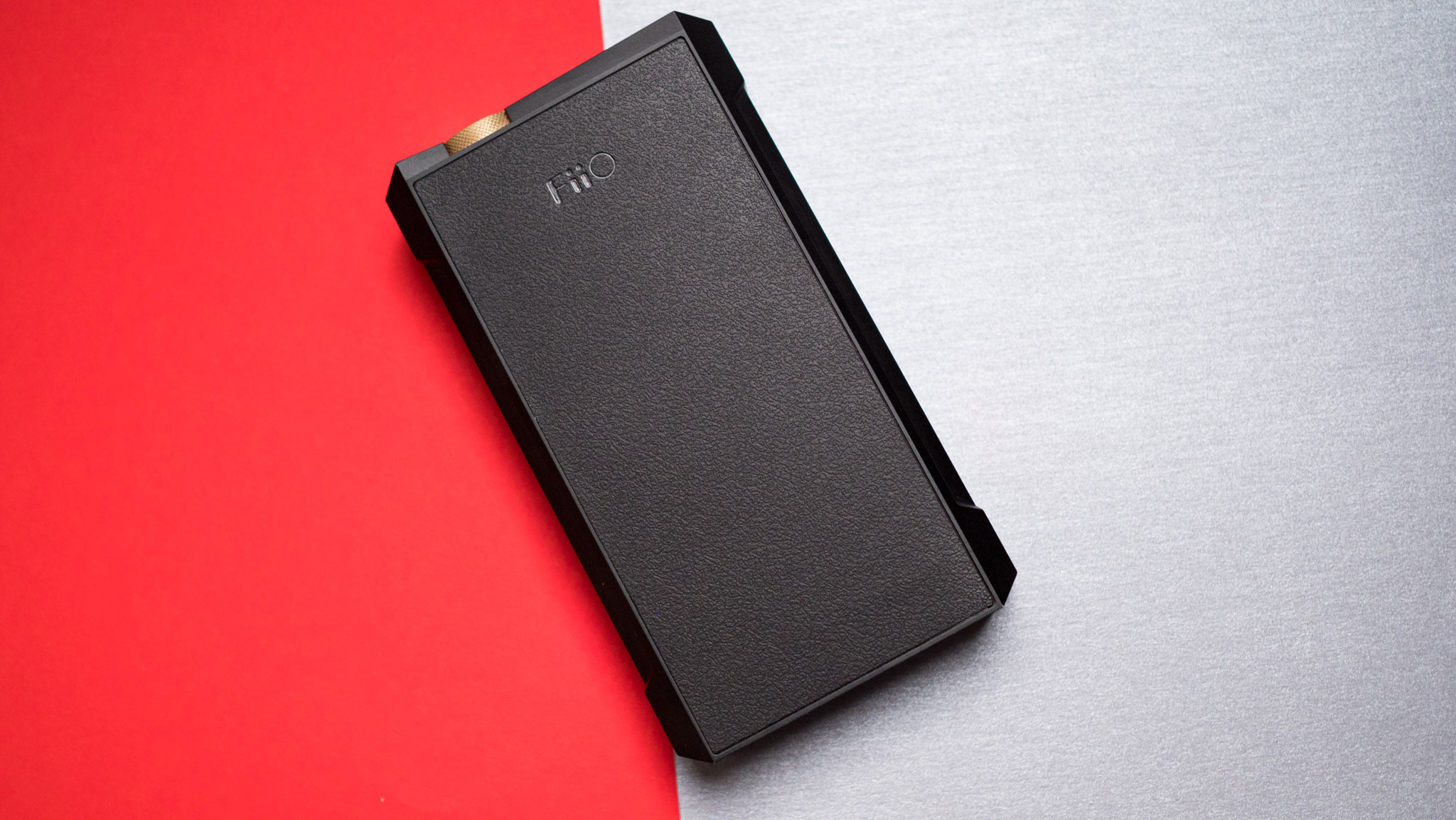
Fiio is known to bundle a lot of accessories with its high-end products, and that's no different with the Q7. The packaging for the DAC is the biggest I've seen yet from Fiio, and includes a lot of gear: the DAC is encased in a gorgeous brown leather case in the box, and it has cutouts for all the ports, buttons, and RGB lights on the sides.
You also get a decent set of cables, including USB-C to USB-C, USB-C to Lightning, a smaller USB-C to USB-C cable that's angled (this is quite handy), and a USB-C to USB-A cable. As the Q7 works in a desktop configuration, you get a power supply within the package that's able to deliver 24W to the unit. The biggest accessory in the package is a custom cooling stand that's designed for the M17.
Fiio bundles this stand for the Q7, and the reason for this is obvious: the DAC gets hot when plugged in, and as it doesn't have any active cooling, it needs an accessory to do the job. The angled cooling stand is powered off USB and has a large fan that does an admirable job managing thermals, and the fan has three settings.
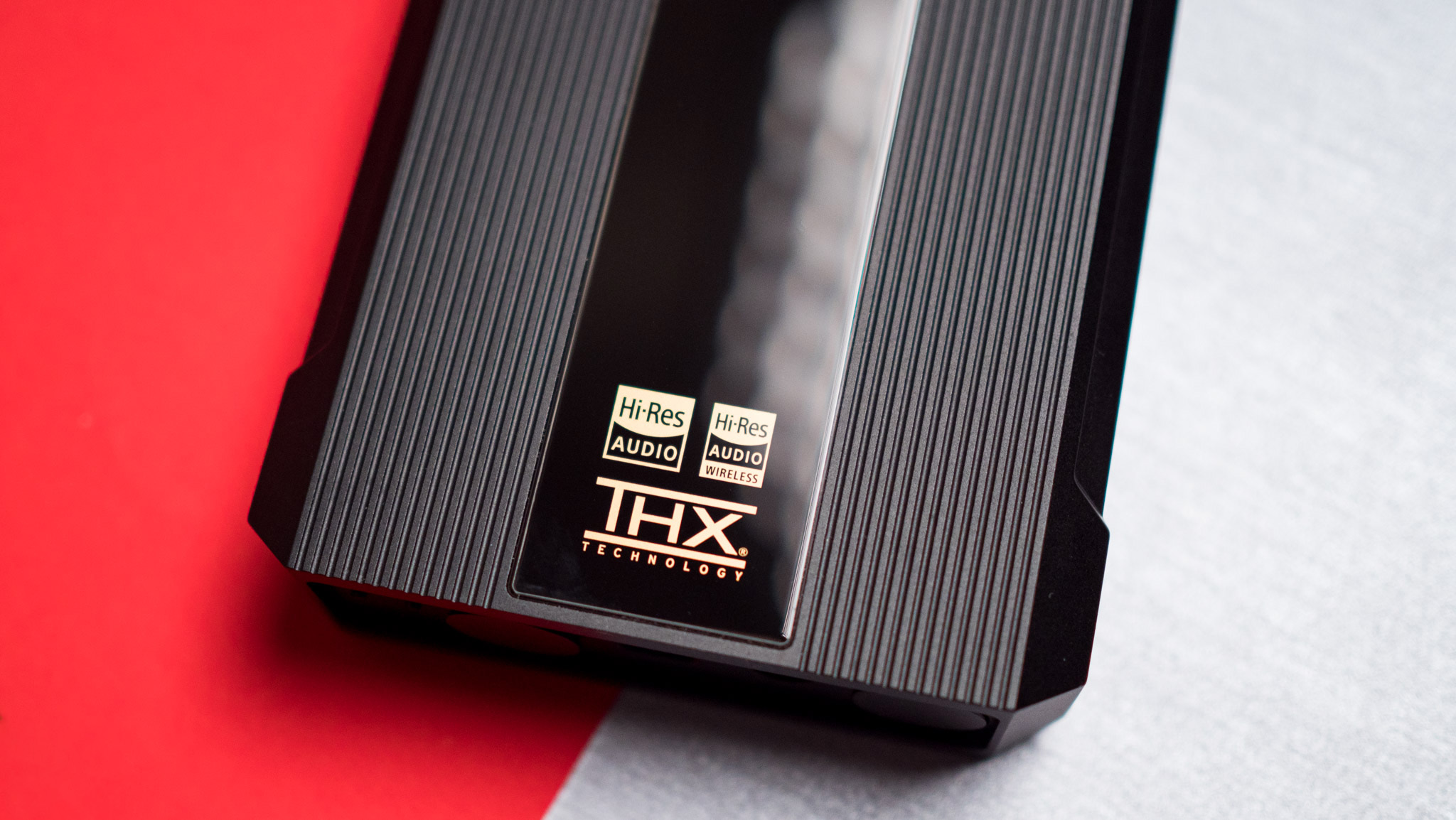
As for the audio hardware, the Q7 is outfitted with ESS Sabre's flagship ES9038Pro DAC along with THX's AAA 788+ linear amplifiers, and you'll find Qualcomm's QCC5124 driving the Bluetooth portion. Fiio isn't messing around here, and the caliber of the hardware clearly signals the brand's intent — the Q7 is a high-end DAC that holds its own against just about any other device in this category.
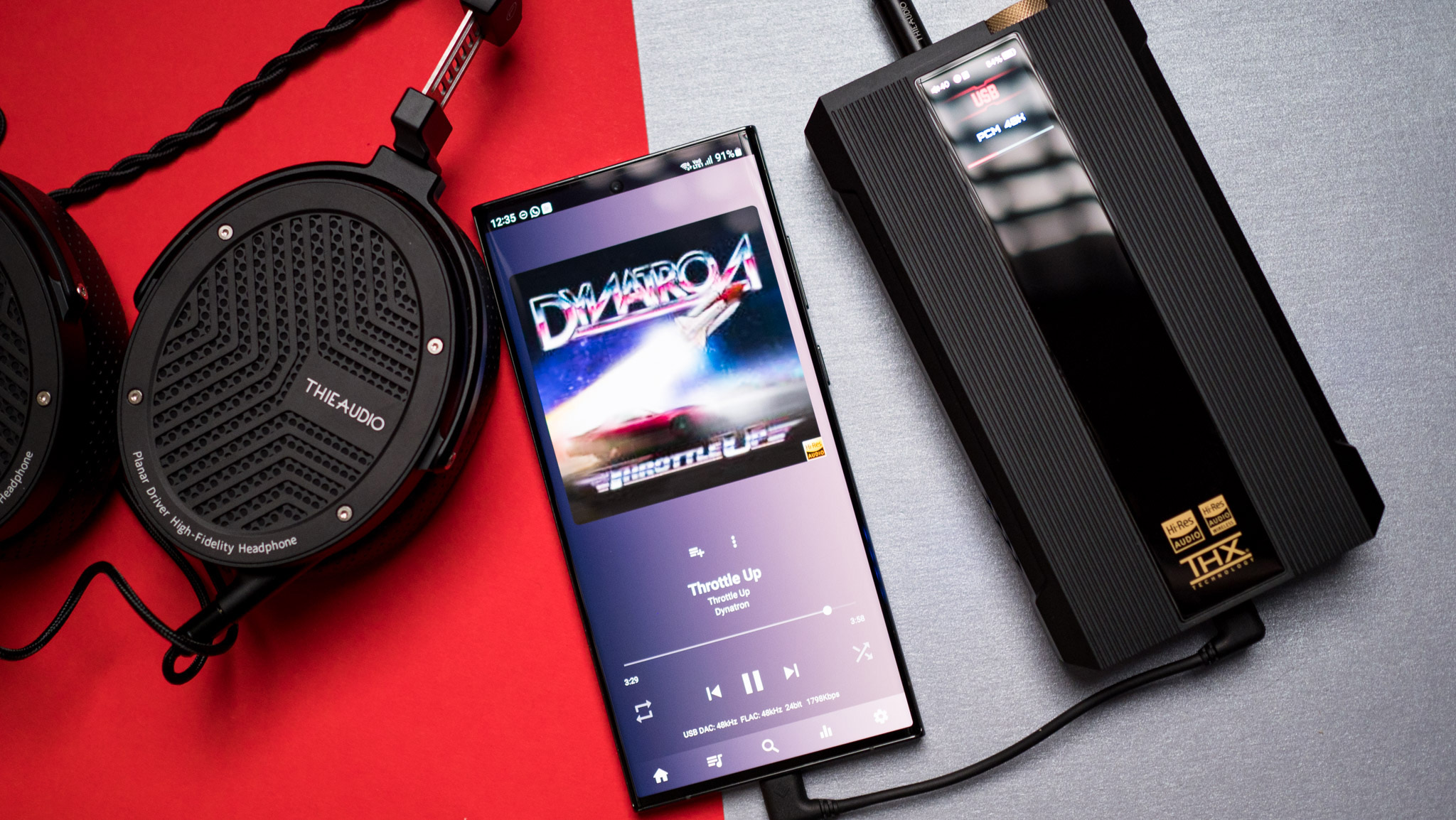
The Q7 offers 32-bit/768kHz PCM decoding and DSD512 in USB DAC mode, and you get 24-bit/192kHz along with DSD64 in coaxial mode and 24-bit/96KHz via optical. There's also MQA rendering for Tidal, although it's at 8x. With the gain set to Ultra High, the Q7 is able to deliver 1500mW of power at 16Ω, 1100mW at 32Ω, and 130mW at 300Ω over the single-ended 3.5mm and 6.35mm ports.
For the 2.5mm and 4.4mm balanced connections, the Q7 delivers 1500mW of power at 16Ω, 3000mW at 32Ω, and 500mW at 300Ω. Needless to say, the Q7 has more than enough power to drive just about any headset regardless of how demanding it can get.
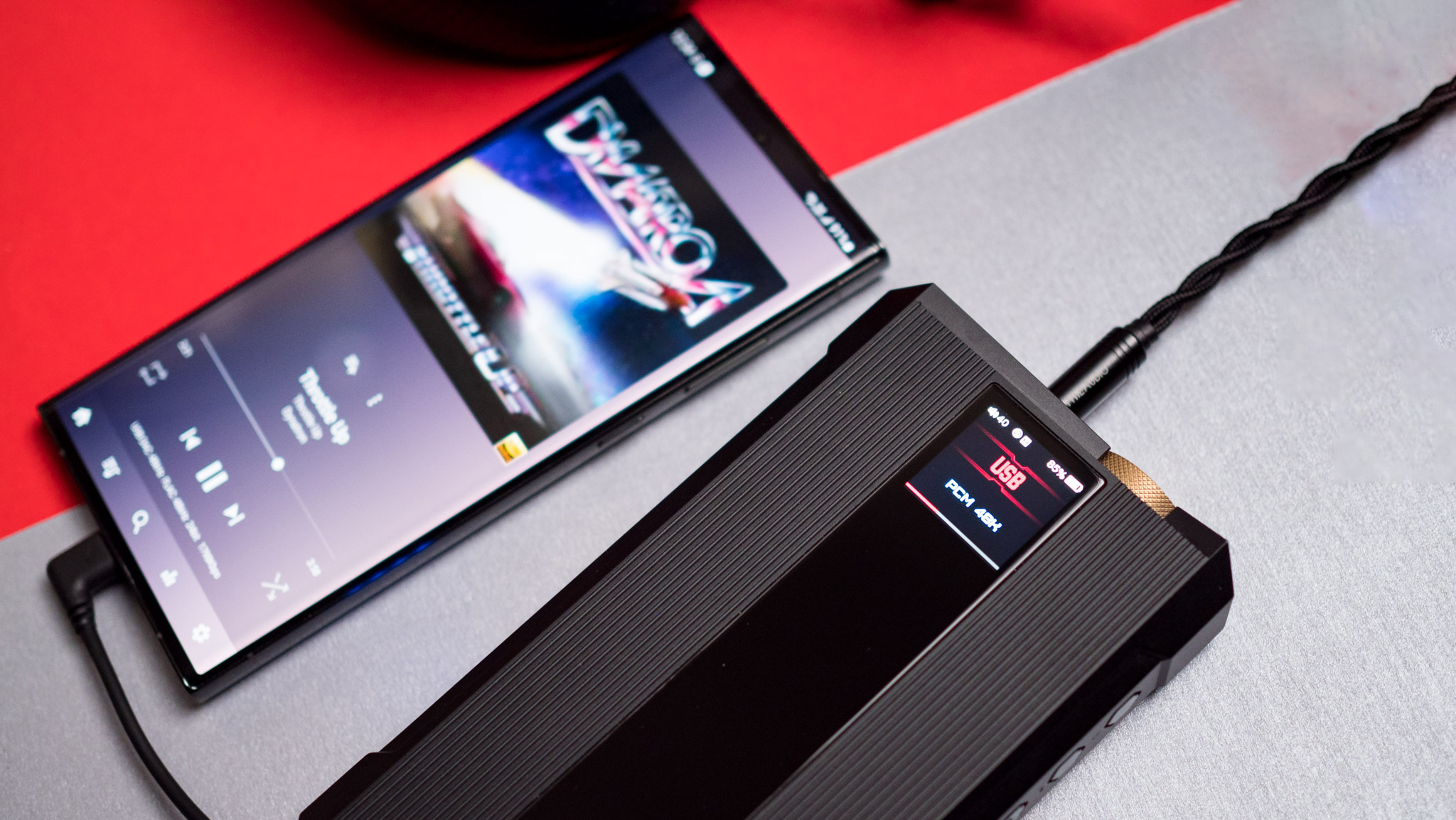
When it comes to the sound, the Q7 is in a class of its own. I used it with the Audeze LCD-X, Meze 99 Classics, and the HD6XX, and it did a phenomenal job driving all the headsets. The hardware on offer means you get excellent lows paired with clear mids and soaring highs, and the tonality was on par with the K9 Pro, a huge achievement in and of itself.
Whether it's overall layering or the soundstage, the Q7 will bring the best out of whatever headset or IEM is connected to it, and Fiio did a magnificent job maintaining the audio fidelity in what is essentially a portable device. The soundstage is fully transparent, and you won't find any distortion here.
Simply put, the Q7 is the best portable DAC you can get right now, and while it is large and cumbersome to carry, it has the power and tonality to put its rivals to shame. The best part is that you can just plug it in and use it as a full-fledged desktop source, and that's what I've been doing with the DAC. If you want a versatile DAC that doesn't miss out on any features, the Q7 is my current recommendation.







